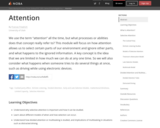
Unit 4 - Module 20
- Subject:
- Psychology
- Social and Behavioral Sciences
- Material Type:
- Textbook
- Author:
- Frances Friedrich
- Date Added:
- 09/20/2023

Unit 4 - Module 20
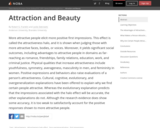
Text and links to all ancillary materials for Module 55
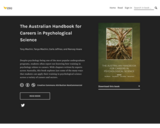
Despite psychology being one of the most popular undergraduate programs, students often report not knowing how training in psychology relates to careers. With chapters written by experts across Australia, this book explores just some of the many ways that students can apply their training in psychological science across a variety of careers and sectors.
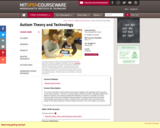
This course illuminates current theories about autism together with challenges faced by people on the autism spectrum. Theories in communicating, interacting socially, managing cognitive and affective overload, and achieving independent lifestyles are covered. In parallel, the course presents state-of-the-art technologies being developed for helping improve both theoretical understanding and practical outcomes. Participants are expected to meet and interact with people on the autism spectrum. Weekly reading, discussion, and a term project are required.
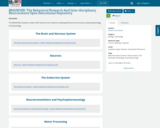
The BRAINOER modules contain OER resources for students studying behavioral neuroscience, psychophysiology, and physiology.
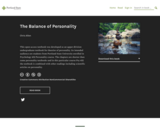
This open access textbook was developed as an upper division undergraduate textbook for theories of personality. Its intended audience are students from Portland State University enrolled in Psychology 432 Personality course. The chapters are shorter than some personality textbooks and in this particular course Psy 432 the textbook is combined with other readings including scientific articles on personality.

This text is an informal beginner’s guide to the basics of statistics needed to conduct tests of statistical significance for simple experimental, quasi-experimental, and correlational research designs. Many free and open textbooks exist for more theoretical and traditional versions of introductory statistics, with more standard notation. This one is designed to be consistent with the approachable way I aim to teach the use of statistical analysis tools to students of psychology and the social sciences. The text is very informal and conversational, because it spawned from my written-out scripts to record brief video lessons.

" This is an intermediate workshop designed for students who have a basic understanding of the principles of theatrical design and who want a more intensive study of costume design and the psychology of clothing. Students develop designs that emerge through a process of character analysis, based on the script and directorial concept. Period research, design, and rendering skills are fostered through practical exercises. Instruction in basic costume construction, including drafting and draping, provide tools for students to produce final projects."
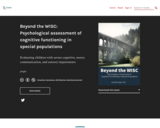
Readers of this book will find information on how to apply their knowledge of psycho-educational assessments to a specialized population – children with multiple, severe disabilities. The specialized assessment skills presented include adaptations for motor, communication, visual, and hearing impairments. Thus, much of the information in this book will also be applicable to children who have specific (singular) impairments in one of these areas. This book provides many suggestions for further education on the topics presented. If you are reading a print version of this book, you may wish to access the electronic version of the book in order to have a direct link to online resources, videos, and articles. You can find the book (available for free) at the following website: https://pressbooks.bccampus.ca/jengle/.
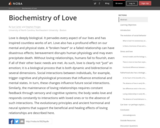
Love is deeply biological. It pervades every aspect of our lives and has inspired countless works of art. Love also has a profound effect on our mental and physical state. A “broken heart” or a failed relationship can have disastrous effects; bereavement disrupts human physiology and may even precipitate death. Without loving relationships, humans fail to flourish, even if all of their other basic needs are met. As such, love is clearly not “just” an emotion; it is a biological process that is both dynamic and bidirectional in several dimensions. Social interactions between individuals, for example, trigger cognitive and physiological processes that influence emotional and mental states. In turn, these changes influence future social interactions. Similarly, the maintenance of loving relationships requires constant feedback through sensory and cognitive systems; the body seeks love and responds constantly to interactions with loved ones or to the absence of such interactions. The evolutionary principles and ancient hormonal and neural systems that support the beneficial and healing effects of loving relationships are described here.
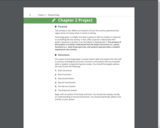
Test anxiety is real. Millions of students all over the country experience this vague sense of unease when it comes to testing. Psychology gives us insight into what is going on with our bodies in response to something like test anxiety. In fact, when a person understands their body’s response to anxiety, it can be helpful in dealing with it. The purpose of this project is to better understand how the body’s structures (i.e., parts), functions (i.e., what those parts do), and systems operate when a student experiences test anxiety.
Abbreviated Directions: On a piece of very large paper or poster board, label and explain the role and/or process of biological structures, functions, and systems that are activated when a student is experiencing test anxiety.
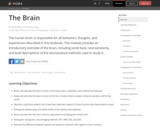
The human brain is responsible for all behaviors, thoughts, and experiences described in this textbook. This module provides an introductory overview of the brain, including some basic neuroanatomy, and brief descriptions of the neuroscience methods used to study it.

An advanced course covering anatomical, physiological, behavioral, and computational studies of the central nervous system relevant to speech and hearing. Students learn primarily by discussions of scientific papers on topics of current interest. Recent topics include cell types and neural circuits in the auditory brainstem, organization and processing in the auditory cortex, auditory reflexes and descending systems, functional imaging of the human auditory system, quantitative methods for relating neural responses to behavior, speech motor control, cortical representation of language, and auditory learning in songbirds.
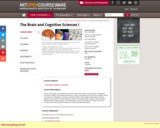
Survey of principles underlying the structure and function of the nervous system, integrating molecular, cellular, and systems approaches. Topics: development of the nervous system and its connections, cell biology or neurons, neurotransmitters and synaptic transmission, sensory systems of the brain, the neuroendocrine system, the motor system, higher cortical functions, behavioral and cellular analyses of learning and memory. First half of an intensive two-term survey of brain and behavioral studies for first-year graduate students. Open to graduate students in other departments, with permission of instructor.
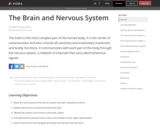
Text and links to all ancillary materials for Module 7
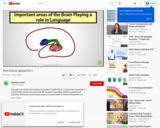
Video discusses neurology and symptoms related to brain injuries that affect speech and cause variations of aphasia.

Your town is holding a mayoral election and the stakes have never been higher. You suspect one of the candidates will begin pushing false information to swing the election. As the cybersecurity expert, your job is to inoculate the townspeople against false information. First, you must learn the strategies of disinformation trolls. Claire Wardle explores the tactics of disinformation campaigns
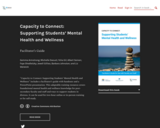
Capacity to Connect: Supporting Students’ Mental Health and Wellness includes a facilitator’s guide with handouts and a PowerPoint presentation. This adaptable training resource covers foundational mental health and wellness knowledge for post-secondary faculty and staff and ways to support students in distress. It can be used for two-hour online or in-person training or for self-study.
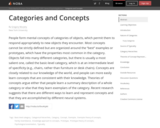
Text and links to all ancillary materials for Module 18

Surveys the molecular and cellular mechanisms of neuronal communication. Covers ion channels in excitable membrane, synaptic transmission, and synaptic plasticity. Correlates the properties of ion channels and synaptic transmission with their physiological function such as learning and memory. Discusses the organizational principles for the formation of functional neural networks at synaptic and cellular levels.